Hainan Birdwatching Guide
Hainan Birdwatching Guide
Dates: Spring Location: Hainan
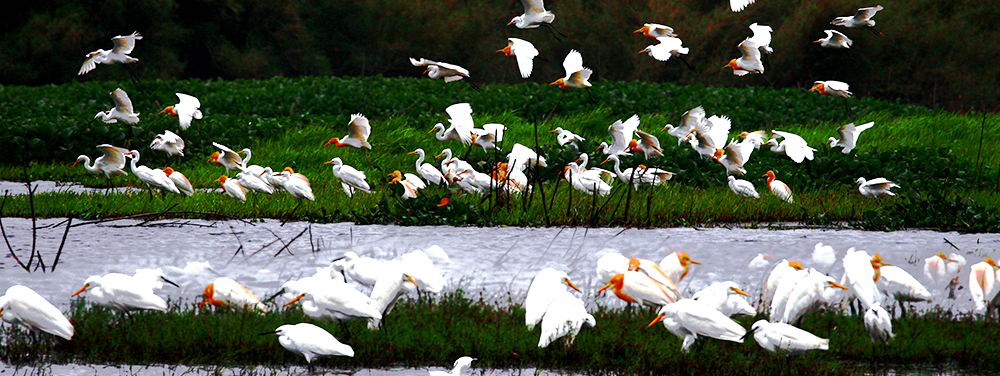
Hainan is a popular destination not only for tourists looking for some fun in the sun, but also for many varieties of tropical and migratory birds, who can be seen in the province’s parks, greenbelts, wetlands, forests, and even on the seashore!
You may have seen many of these species and wondered what sort of bird they were, wishing there were some way to identify them. Now you can! Just check our list below for some of the common and interesting birds that you might find here in Hainan! I’ll list the English, Latin, and Chinese name of the bird, with pinyin! Remember, this is not a comprehensive list – if you see a bird that isn’t listed here send us a note and we will try to identify it together!
Purple swamphen (Porphyrio porphyrio)
紫水鸡 zǐshuǐjī
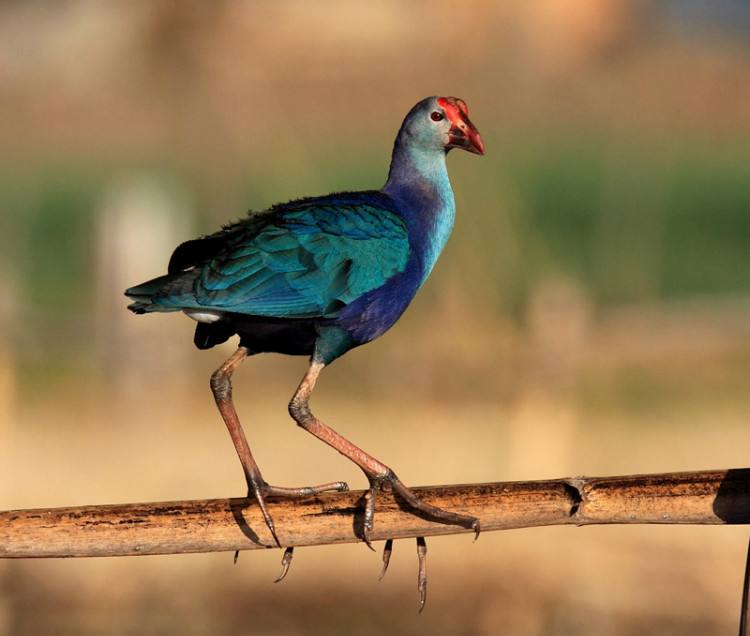
The purple swamphen is also known as the sultana bird. The species makes loud, quick, bleating and hooting calls which are hardly bird-like in tone. It is particularly noisy during the breeding season. Despite being clumsy in flight, it can fly long distances and is a good swimmer, especially for a bird without webbed feet. Pairs nest in a large pad of interwoven reed flags, etc., on a mass of floating debris or amongst matted reeds slightly above water level in swamps, clumps of rushes in paddocks or long unkempt grass. Each bird can lay 3–6 speckled eggs, pale yellowish stone to reddish buff, blotched and spotted with reddish brown.
Light-vented bulbul (Pycnonotus sinensis)
白头鹎 báitóu bēi

Also known as the white-vented bulbul and Chinese bulbul, this small bird with a large white patch is found in central and southern China, and northern Vietnam.
Black-throated laughingthrush (Garrulax chinensis)
黑喉噪鹛 hēihóu zàoméi
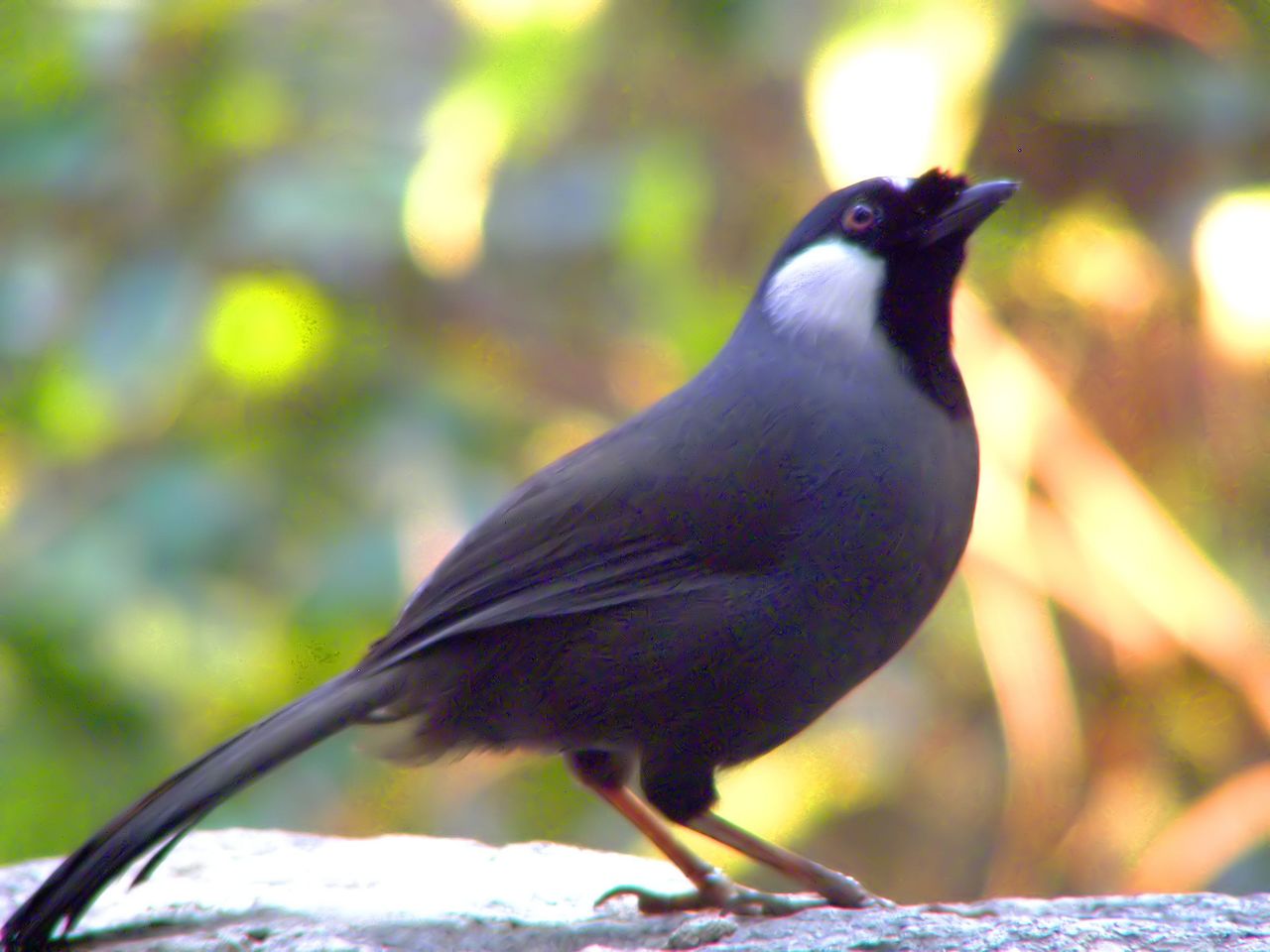
The black-throated laughingthrush subspecies in Hainan is considered a separate species, Swinhoe’s laughingthrush (Garrulax monachus) by some. The bird, found in China, Cambodia, Laos, Myanmar, Thailand, and Vietnam, prefers subtropical and tropical moist lowland forests.
Tree sparrow (Passer montanus)
树麻雀 shùmá què
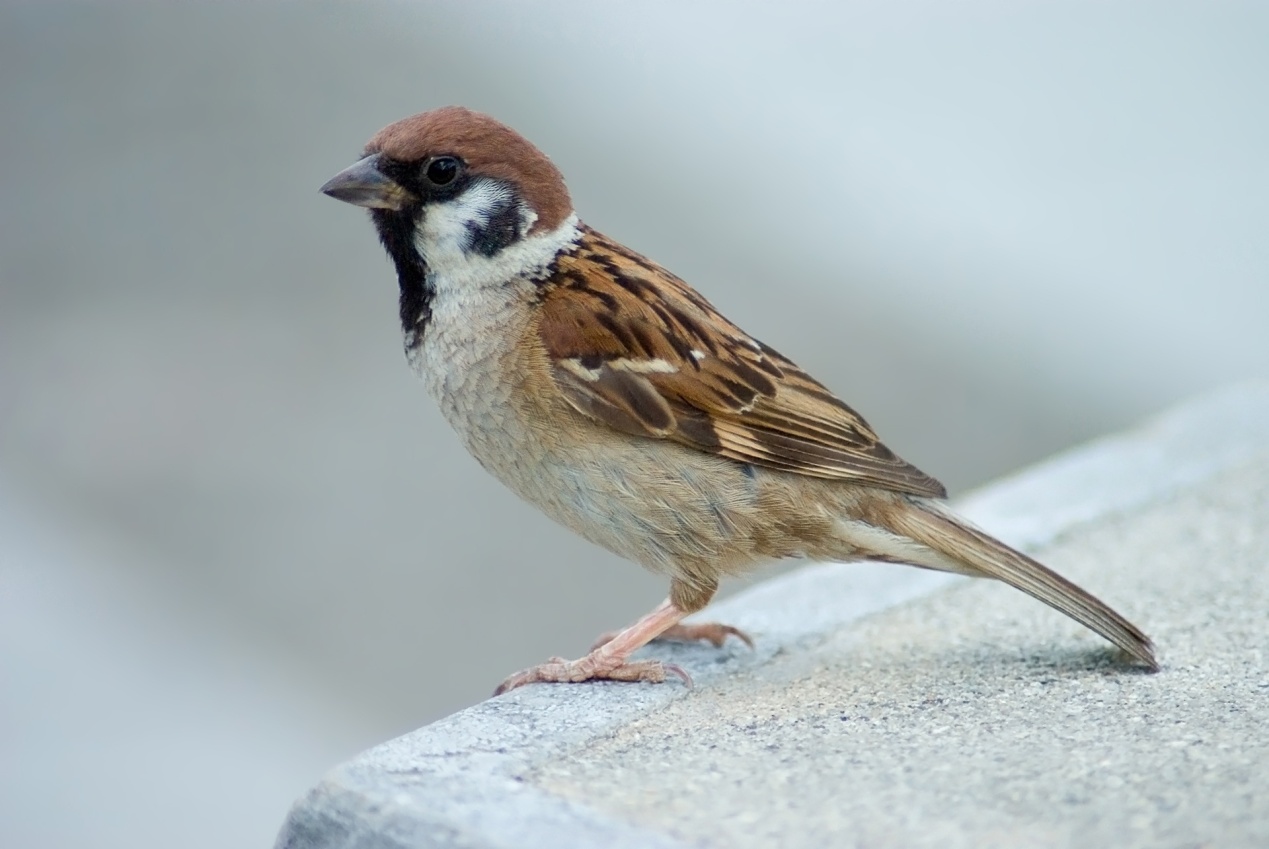
The Tree sparrow is widespread in the towns and cities of eastern Asia. The Tree sparrow's untidy nest is built in a natural cavity, a hole in a building or the large nest of a magpie or white stork.
Red-billed starling (Spodiopsar sericeus)
丝光椋鸟 sīguāng liángniǎo
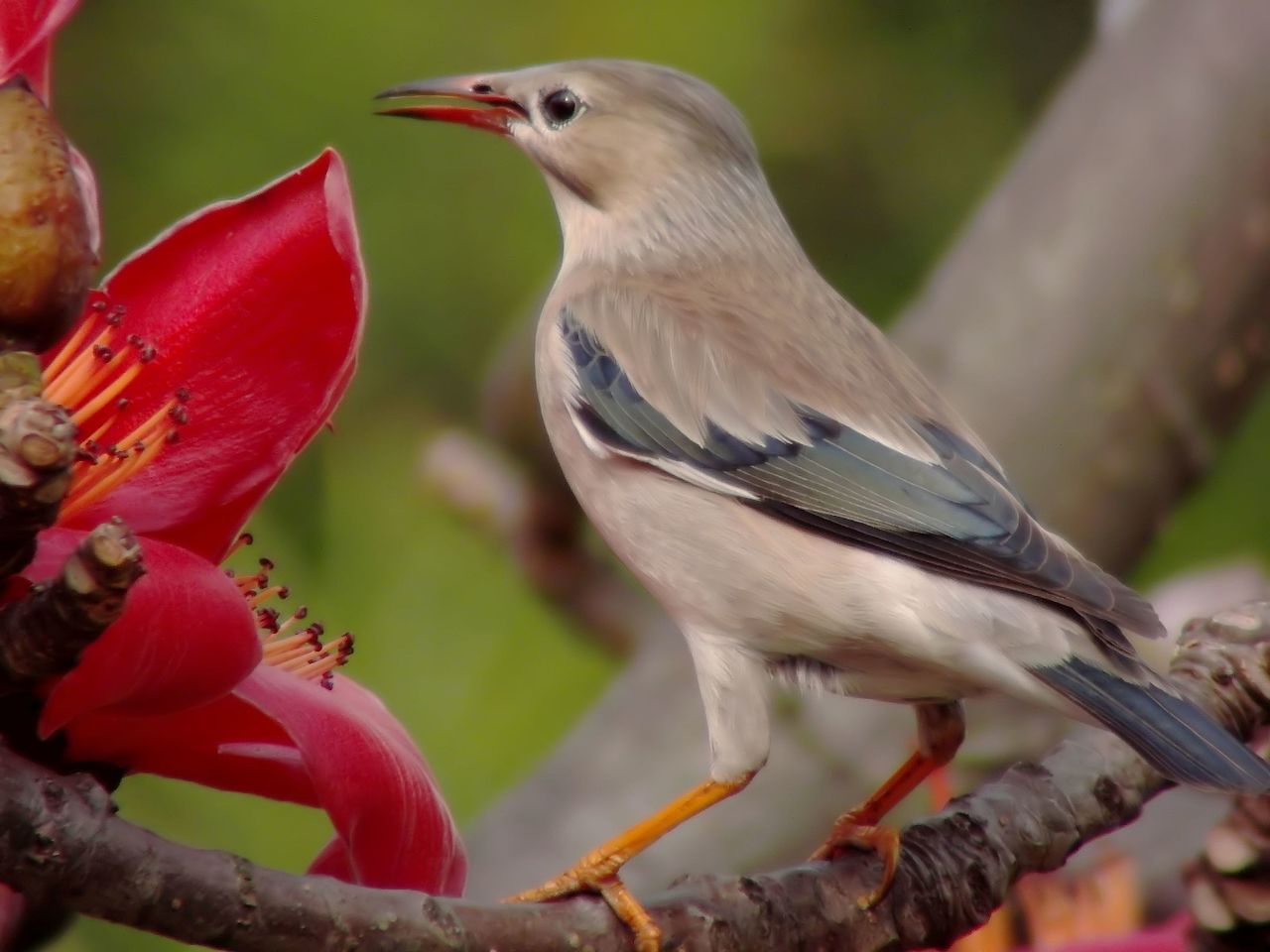
The Red-billed starling is a species of starling in the family Sturnidae. It is found in south and southeastern China. It can often be seen on the branches of Hainan’s iconic Kapok tree, as in the photo.
Black-naped monarch (Hypothymis azurea)
黑枕王鹟 hēizhěn wángwēng
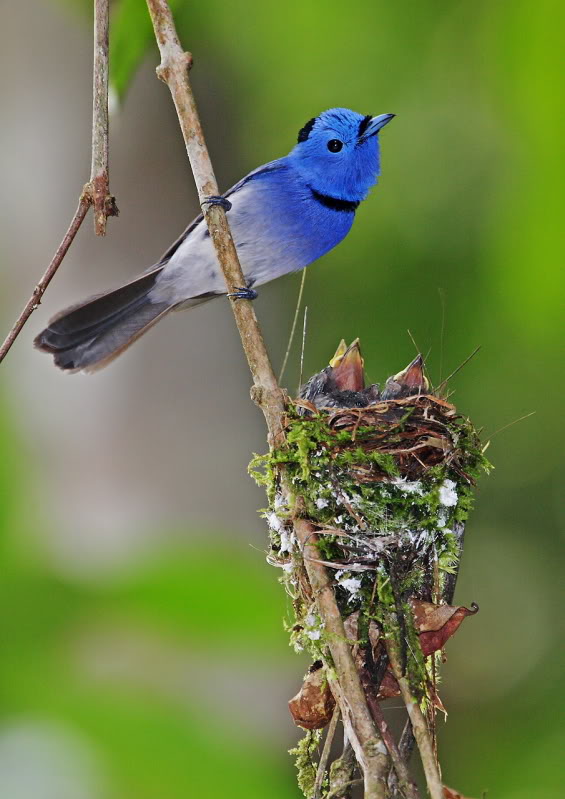
The black-naped monarch breeds across tropical southern Asia from India and Sri Lanka east to Indonesia and the Philippines. This species is usually found in thick forests and other well-wooded habitats. The calls are a sharp and abrupt skrip. Two to three eggs are laid in a cup nest placed in the fork of a tree. The nest is decorated with spider-egg cases.
Great egret (Ardea alba)
大白鹭 dàbáilù

The great egret, also known as the common egret, large egret, great white egret, or great white heron, is a large, widely distributed egret, with four subspecies found in Asia, Africa, the Americas, and southern Europe. Distributed across most of the tropical and warmer temperate regions of the world, it builds tree nests in colonies close to water. The species adapts well to human habitation and can be readily seen near wetlands and bodies of water in urban and suburban areas.[
Little egret (Egretta garzetta)
小白鹭 xiaobáilù

Little egrets are sociable birds and are often seen in small flocks. Nevertheless, individual birds do not tolerate others coming too close to their chosen feeding site, though this depends on the abundance of prey. They use a variety of methods to procure their food; they stalk their prey in shallow water, often running with raised wings or shuffling their feet to disturb small fish, or may stand still and wait to ambush prey.
Chinese pond heron (Ardeola bacchus)
池鹭 chílù
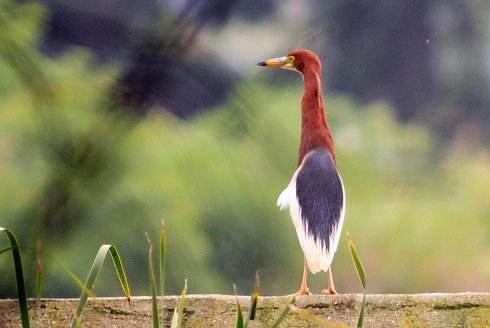
The Chinese pond heron is typically 47 cm (19 in) long with white wings, a yellow bill with a black tip, yellow eyes and legs. Its overall color is red, blue and white during breeding season, and greyish-brown and flecked with white at other times. It is found in shallow fresh and salt water wetlands and ponds in China and temperate and subtropical East Asia.
Grey heron (Ardea cinerea)
苍鹭 cānglù
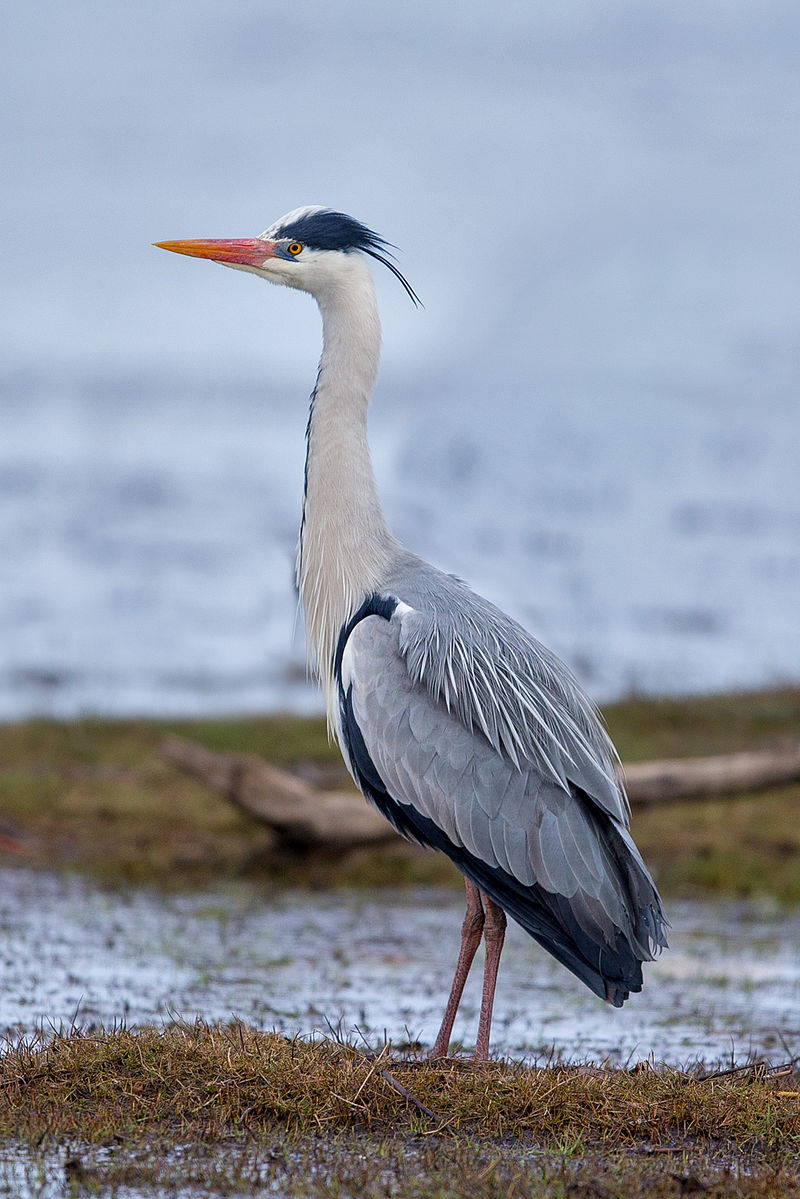
A bird of wetland areas, the Grey heron can be seen around lakes, rivers, ponds, marshes and on the sea coast. It feeds mostly on aquatic creatures which it catches after standing stationary beside or in the water or stalking its prey through the shallows.
Standing up to a meter tall, adults weigh from 1 to 2 kg (2.2 to 4.4 lb).
Black-crowned night heron (Nycticorax nycticorax)
夜鹭 yèlù
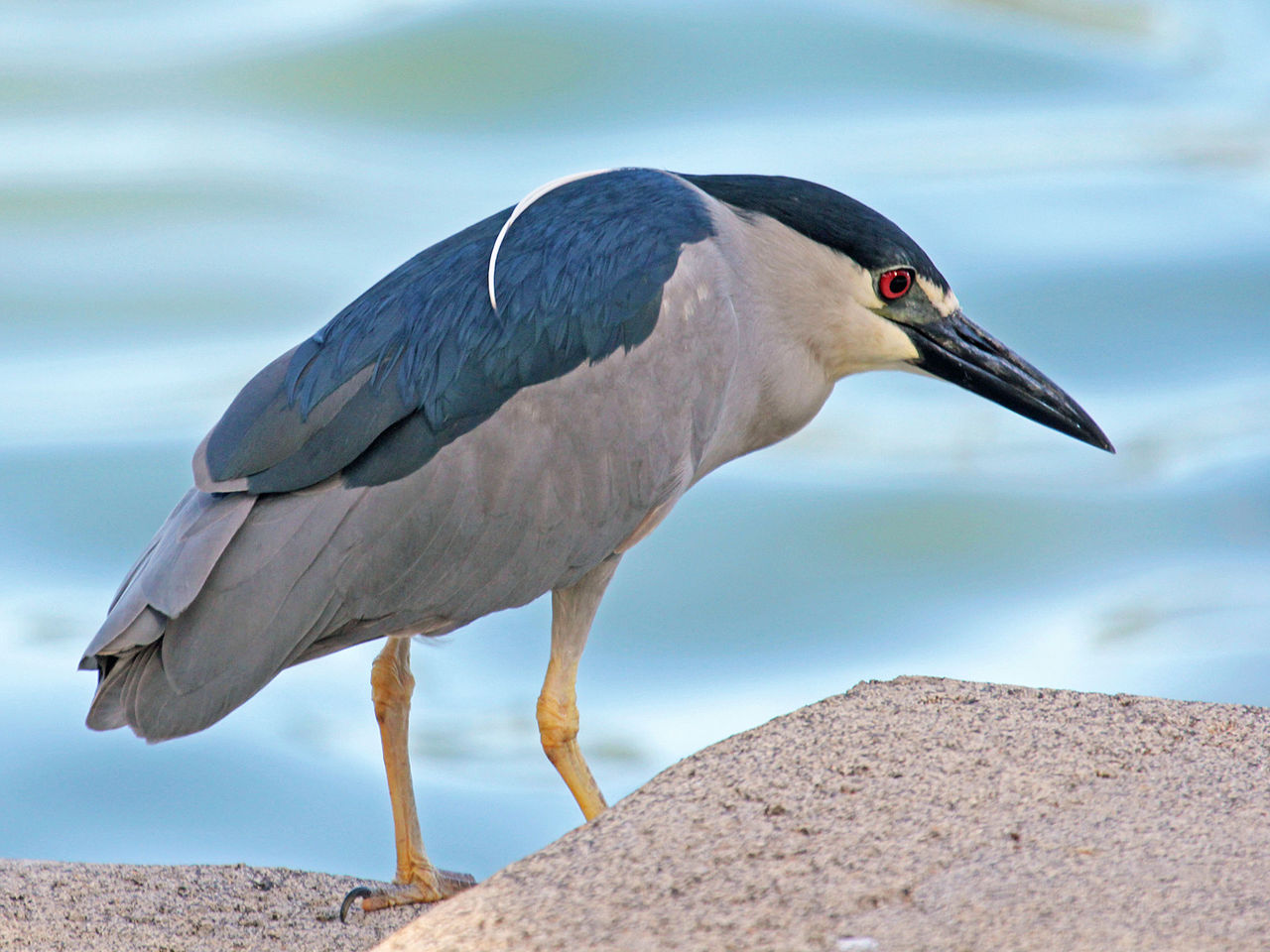
The black-crowned night heron, or black-capped night heron, commonly shortened to just night heron in Eurasia, is a medium-sized heron found throughout a large part of the world, except in the coldest regions and Australasia. Adults are approximately 64 cm (25 in) long and weigh 800 g (28 oz). The breeding habitat is fresh and salt-water wetlands throughout much of the world. These birds stand still at the water's edge and wait to ambush prey, mainly at night or early morning.
They primarily eat small fish, crustaceans, frogs, aquatic insects, small mammals, and small birds. They are among the seven heron species observed to engage in bait fishing; luring or distracting fish by tossing edible or inedible buoyant objects into water within their striking range – a rare example of tool use among birds.
Little ringed plover (Charadrius dubius)
金眶鸻 jīnkuàng héng

Adults have a grey-brown back and wings, a white belly and a white breast with one black neckband. They have a brown cap, a white forehead, a black mask around the eyes with white above and a short dark bill. The legs are flesh-coloured and the toes are all webbed. Their breeding habitat is open gravel areas near freshwater, including gravel pits, islands and river edges. They nest on the ground on stones with little or no plant growth. Both males and females take turns incubating the eggs.
Common sandpiper (Actitis hypoleucos)
矶鹬 jīyù
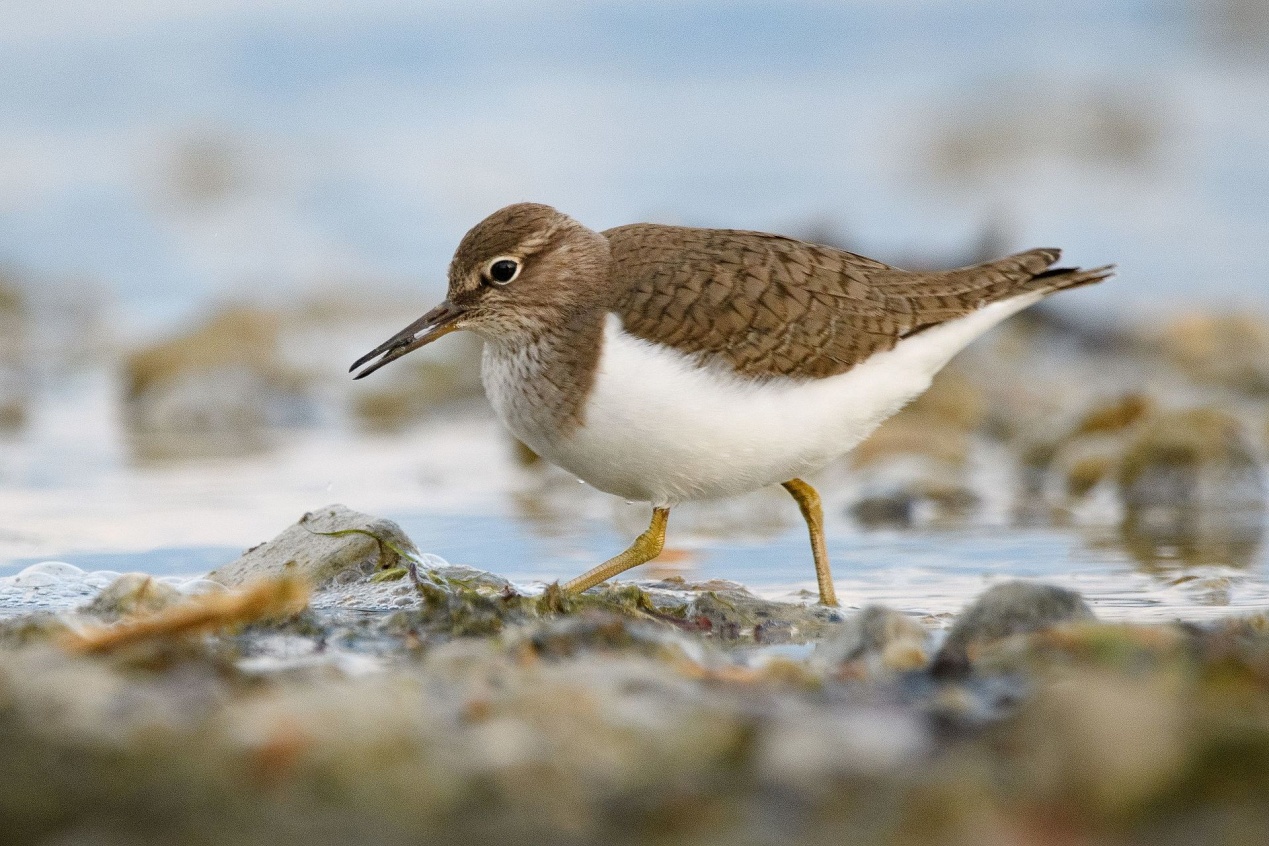
The Common sandpiper is a gregarious bird and is seen in large flocks, and has a distinctive stiff-winged flight, low over the water. The common sandpiper breeds across most of temperate and subtropical Europe and Asia, and migrates to Africa, southern Asia and Australia in winter. The common sandpiper forages by sight on the ground or in shallow water, picking up small food items such as insects, crustaceans and other invertebrates; it may even catch insects in flight.
Wood sandpiper (Tringa glareola)
林鹬 línyù
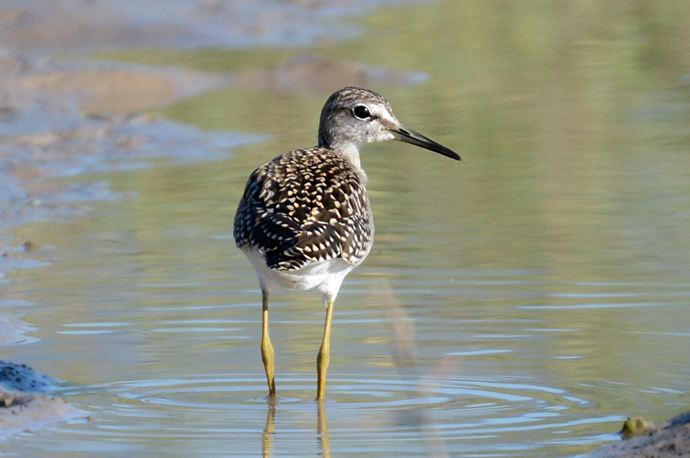
The wood sandpiper breeds in subarctic wetlands from the Scottish Highlands across Europe and Asia. They migrate to Africa, Southern Asia, particularly India, and Australia. This bird is usually found on freshwater during migration and wintering. They forage by probing in shallow water or on wet mud, and mainly eat insects and similar small prey.
Red-necked stint (Calidris ruficollis)
红颈滨鹬 hóngjǐng bīnyù
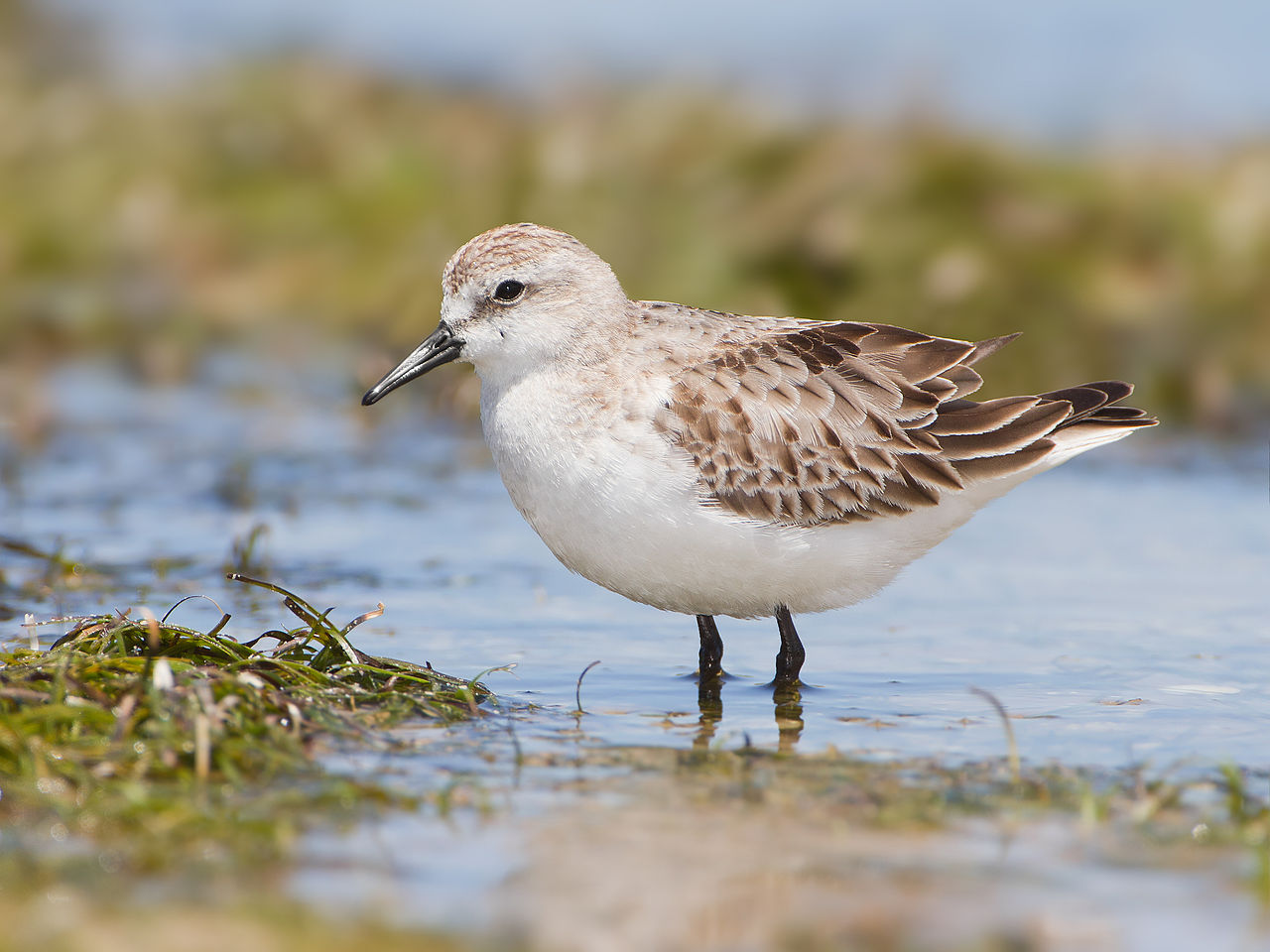
Red-necked stints are strongly migratory, breeding in eastern Eurasia and spending the non-breeding season in South East Asia and Australasia as far south as Tasmania and New Zealand. They forage in wet grassland and soft mud, mainly picking up food by sight. They feed on intertidal mudflats and along the muddy margins of freshwater lakes. They mainly eat insects and other small invertebrates.
Long-toed stint (Calidris subminuta)
长趾滨鹬 chángzhǐ bīnyù
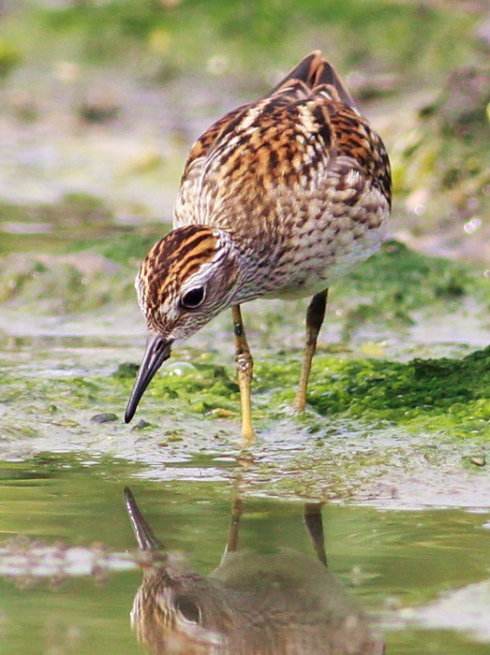
The Long-toed stint breeds across northern Asia and is strongly migratory, wintering in south and south east Asia and Australasia. These birds forage on mudflats, picking up food by sight, sometimes by probing. They mainly eat small crustaceans, insects and snails. Little is known of the breeding habits of this species, although it nests on the ground, and the male has a display flight.
Puff-throated bulbul (Alophoixus pallidus)
白喉冠鹎 báihóu guānbēi
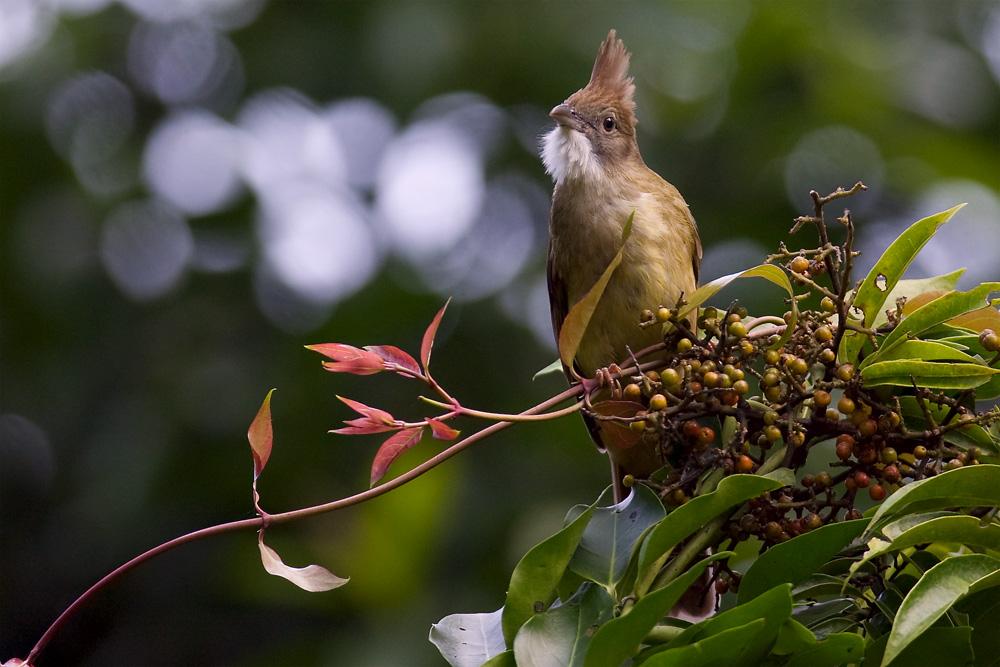
The natural habitat of the Puff-throated bulbul is subtropical or tropical moist lowland forests. Alternate names include the olivaceous bearded-bulbul, olivaceous bulbul and white-throated bulbul. The female builds the nest and incubates and broods the young. Males and helpers aid in feeding the nestlings and fledglings. Nests are open cups typically located in the understorey.
Red-whiskered bulbul (Pycnonotus jocosus)
红耳鹎 hóng'ěrbēi
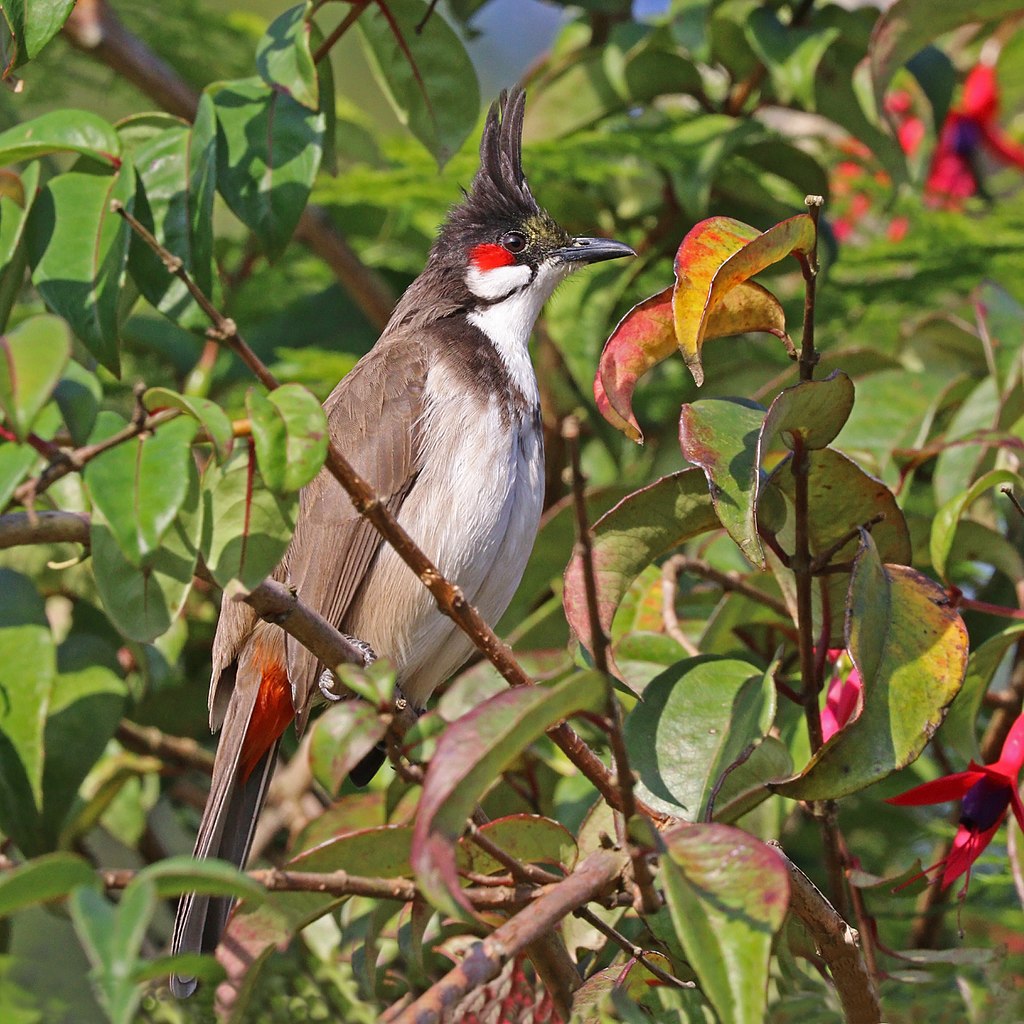
This is a bird of lightly wooded areas, more open country with bushes and shrubs, and farmland. The loud and evocative call is a sharp kink-a-joo or pettigrew or kick-pettigrew or pleased to meet you. The red-whiskered bulbul feeds on fruits (including those of the yellow oleander that are toxic to mammals), nectar and insects.
Japanese white-eye (Zosterops japonicus)
暗绿绣眼鸟 ànlǜxiù yǎnniǎo
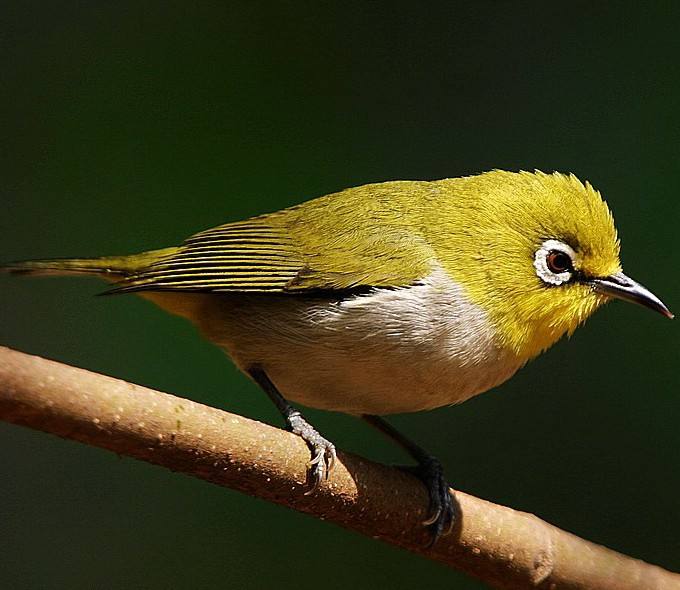
The native range of the Japanese white-eye includes much of east Asia, including Japan, Korea, China, Vietnam, Taiwan, and the Philippines. This bird species is rarely found on the ground. It is a very sociable species that may form flocks with other species, in which the birds form groups to forage during flight; white-eyes only flock with birds of other species outside of the breeding season. The species is omnivorous, living on a diet of fruit from several species of flowering plants, various types of insects, and nectar at all levels of foliage. It feeds on insects by searching the leaves of flowers and scouring tree bark for larvae. Consequences of its diet include regulation of local insect populations and dispersal of seeds.
White-rumped shama (Copsychus malabaricus)
白腰鹊鸲 báiyāo quèqú
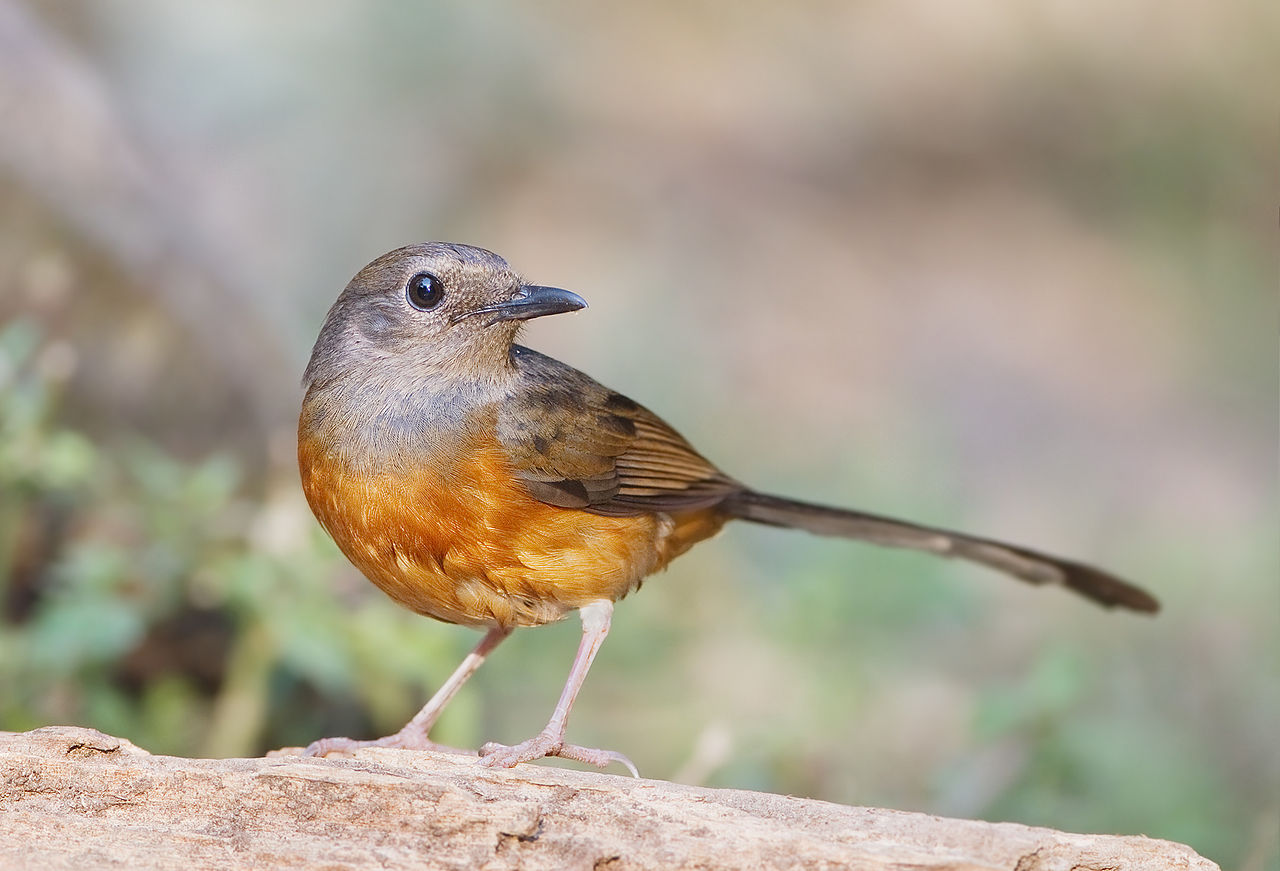
Native to densely vegetated habitats in the Indian subcontinent and Southeast Asia, its popularity as a cage-bird and songster has led to the white-rumped shama being introduced elsewhere. They are shy but very territorial, laying a clutch of four or five eggs in a nest placed in the hollow of a tree. During courtship, males pursue the female, alight above the female, give a shrill call, and then flick and fan out their tail feathers. This is followed by a rising and falling flight pattern by both. If the male is unsuccessful, the female will threaten the male, gesturing with her mouth open.
Long-tailed shrike (Lanius schach)
棕背伯劳 zōngbèi bóláo
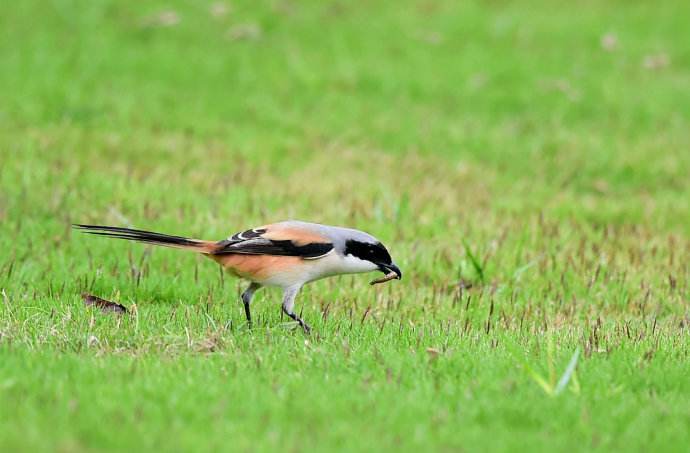
The long-tailed shrike or rufous-backed shrike (Lanius schach) is a member of the bird family Laniidae, the shrikes. They are found widely distributed across Asia and there are variations in plumage across the range. It favors dry open habitats and is often found perched prominently atop a bush or on a wire. Long-tailed shrikes take a wide variety of animal prey. On occasion, they have been noted capturing fish from a stream. They also eat small snakes and sometimes take prey from other birds. They captures flying insects in the air and sometimes impale prey on a thorny bush after feeding just on the head or brain.
Green-billed malkoha (Phaenicophaeus tristis)
绿嘴地鹃 lǜzuǐ dìjuān
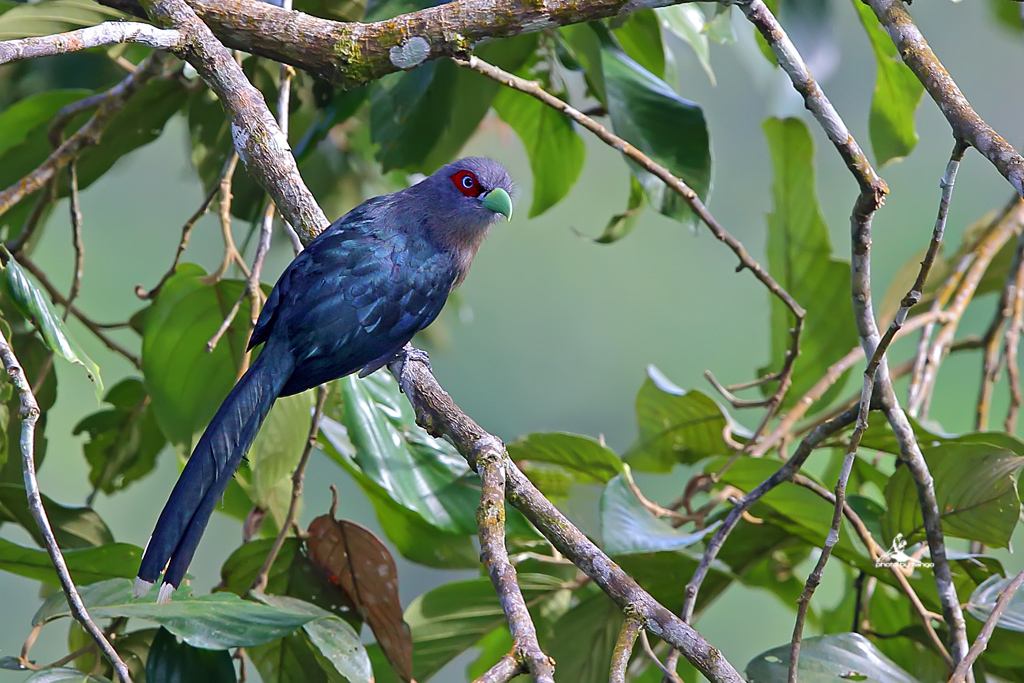
The green-billed malkoha is a species of non-parasitic cuckoo found throughout Indian Subcontinent and Southeast Asia. The birds are waxy bluish black with a long graduated tail with white tips to the tail feathers. The bill is prominent and curved. These birds are found in dry scrub and thin forests.
Crested honey buzzard (Pernis ptilorhynchus)
凤头蜂鹰 fèngtóu fengyīng
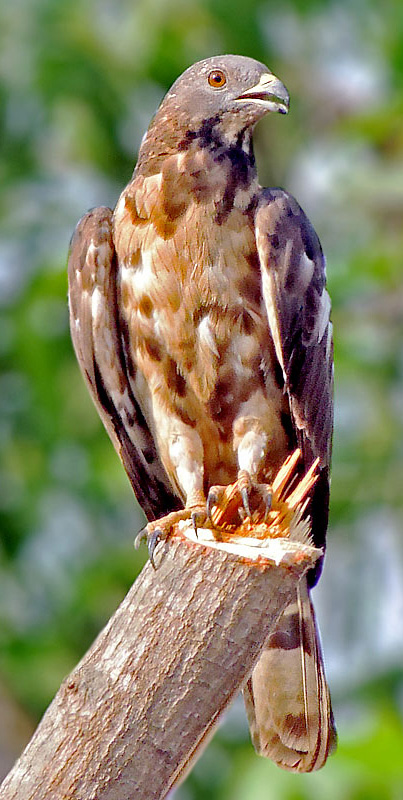
Also known as the Oriental honey buzzard, the Crested honey buzzard breeds in Asia from central Siberia east to Japan. It is a summer migrant to Siberia, wintering in tropical Southeast Asia. It is a specialist feeder, living mainly on the larvae of social bees and wasps, and eating bits of comb and honey; it takes other small insect prey such as cicadas.
Grey-faced buzzard (Butastur indicus)
灰脸鵟鹰 hēiliǎn kuángyīng

The grey-faced buzzard is an Asian bird of prey. It is typically between 41 and 46 cm in length, making it a medium-sized raptor. It breeds in East Russia, North China, Korea, and Japan, and winters in South-east Asia. They are found in many different environments; woodlands, paddy-fields, streams, and grasslands. In its breeding range, the buzzard is found in coniferous and mixed evergreen forests in mountains, at forest edges, fields, meadows, marshes, and around agricultural lands.
White-breasted waterhen (Amaurornis phoenicurus)
白胸苦恶鸟 báixiōng kǔ'èniǎo
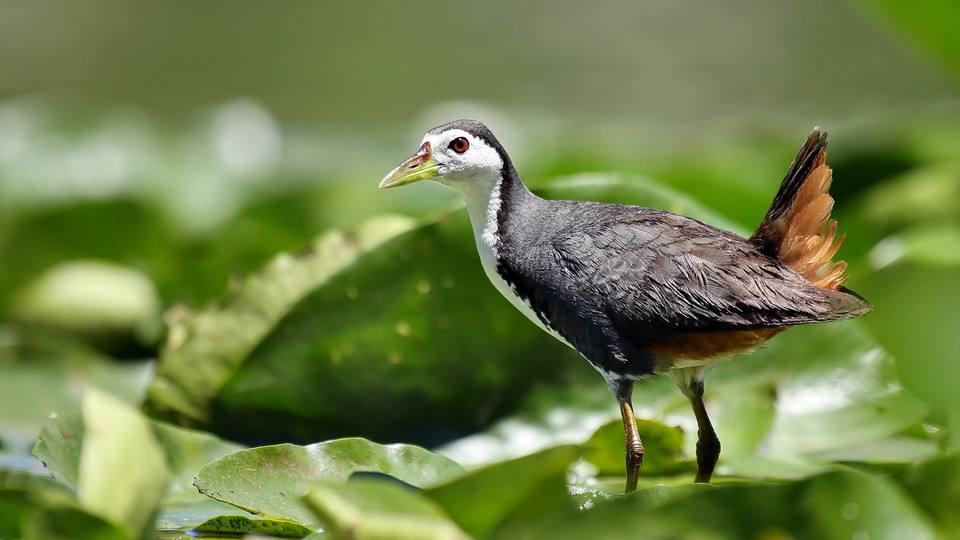
White-breasted waterhen are usually seen singly or in pairs as they forage slowly along the edge of the water, mainly on the ground but sometimes clambering up low vegetation. The tail is held up and jerked as they walk. They probe with their bill in mud or shallow water, also picking up food by sight. They mainly eat insects, small fish (which are often carefully washed in water), aquatic invertebrates, and grains or seeds.
Eurasian hoopoe (Upupa epops)
戴胜 dàishèng
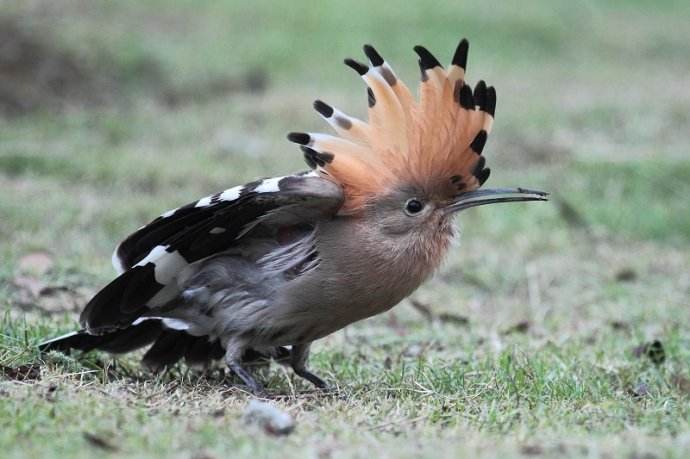
The Eurasian hoopoe is widespread in Europe, Asia, and North Africa and northern Sub-Saharan Africa. The hoopoe has two basic requirements of its habitat: bare or lightly vegetated ground on which to forage and vertical surfaces with cavities (such as trees, cliffs or even walls, nestboxes, haystacks, and abandoned burrows in which to nest. These requirements can be provided in a wide range of ecosystems, and as a consequence the hoopoe inhabits a wide range of habitats such as heath, wooded steppes, savannas and grasslands, as well as forest glades.
Crested myna (Acridotheres cristatellus)
八哥 bāgē
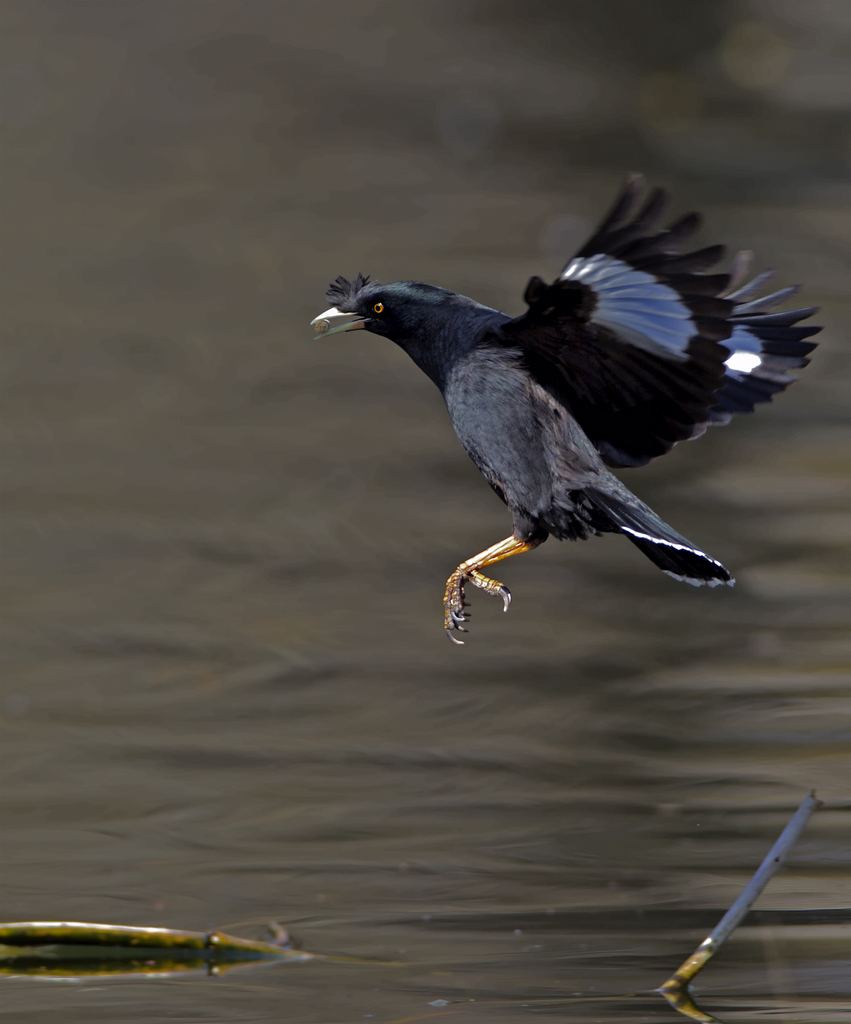
The crested myna is a species of starling native to southeastern China and Indochina. Unlike other similar mynas, its bill is dull whitish rather than orange-yellow.
Olive-backed sunbird (Cinnyris jugularis)
黄腹花蜜鸟 huángfù huāmìniǎo
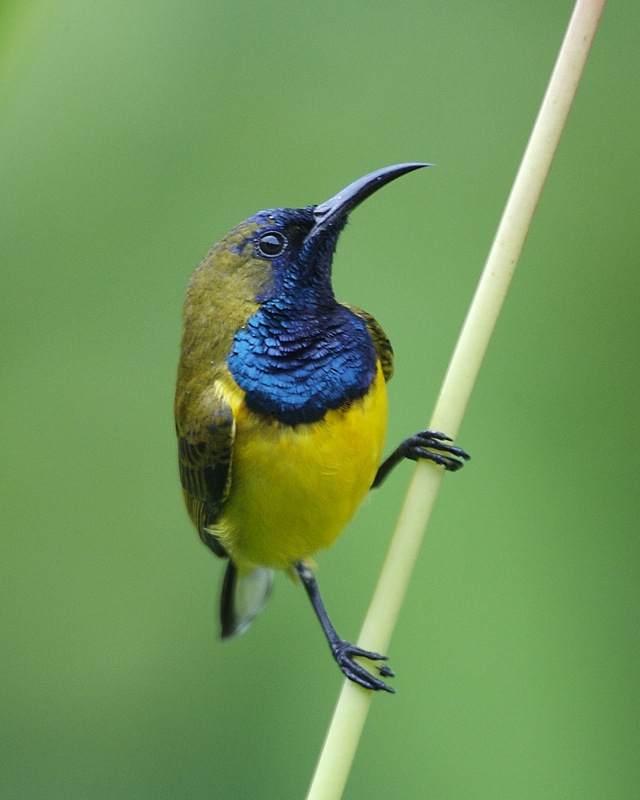
The sunbirds are a group of very small Old World passerine birds which feed largely on nectar, although they will also take insects, especially when feeding young. Their flight is fast and direct on their short wings. Most species can take nectar by hovering, but usually perch to feed most of the time. The olive-backed sunbird is common across southern China and Southeast Asia to Queensland and the Solomon Islands. Originally from mangrove habitat, the olive-backed sunbird has adapted well to humans, and is now common even in fairly densely populated areas, even forming their nests in human dwellings.
Spotted dove (Spilopelia chinensis)
珠颈斑鸠 zhūjǐng bānjiū

The spotted dove is a small and somewhat long-tailed pigeon that is a common resident breeding bird across its native range on the Indian subcontinent and Southeast Asia. The spotted dove in its native range in Asia is found across a range of habitats including woodland, scrub, farmland and habitation. They forage on the ground for grass seeds, grains, fallen fruits and seeds of other plants.
Blue-tailed bee-eater (Merops philippinus)
栗喉蜂虎 lìhóu fēnghǔ
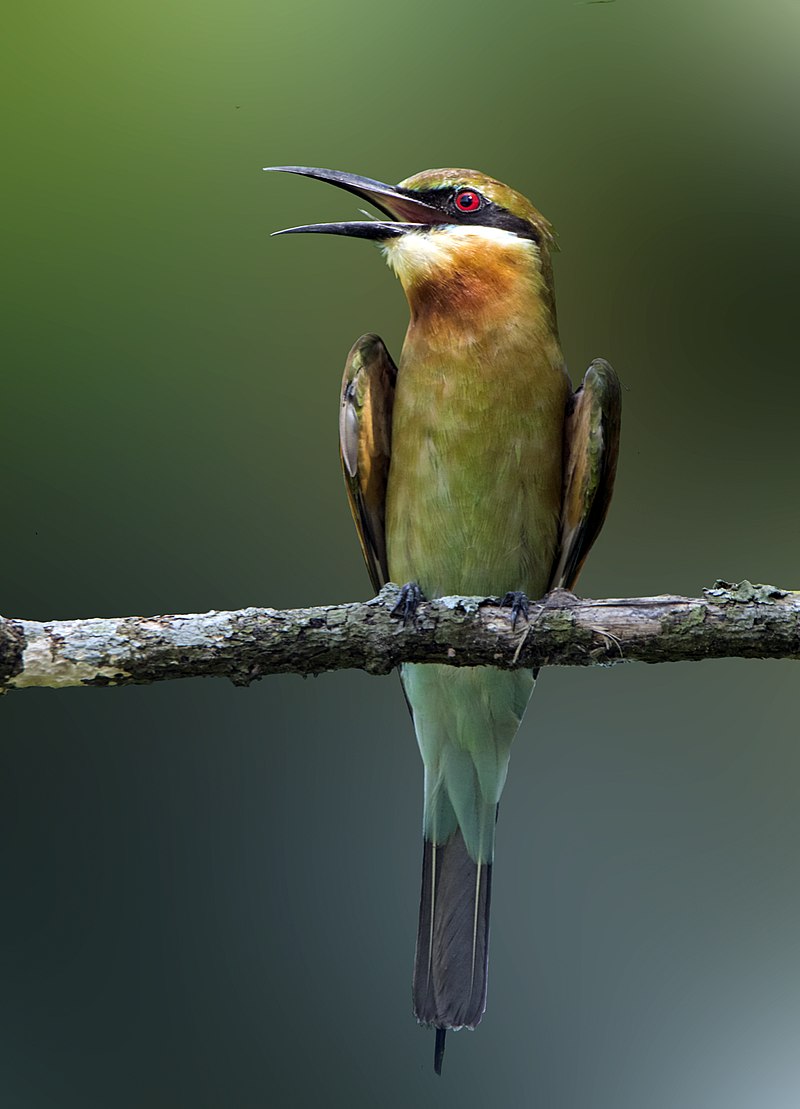
This is a bird which breeds in sub-tropical open country, such as farmland, parks or ricefields. It is most often seen near large bodies of water. Like other bee-eaters it predominantly eats insects, especially bees, wasps and hornets, which are caught in the air by sorties from an open perch. This species probably takes bees and dragonflies in roughly equal numbers. The insects that are caught are beaten on the perch to kill and break the exoskeleton.
I hope you’ve enjoyed this look at some of the amazing birds of Hainan! Now head out and see how many you can spot for yourself!
by Nicki Johnson
Explore Hainan





